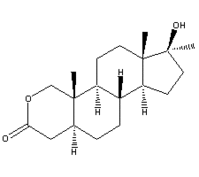EAST BRUNSWICK, N.J. -- Savient Pharmaceuticals, Inc. (NASDAQ: SVNTE) an emerging specialty pharmaceuticals company focused on developing, manufacturing and marketing novel therapeutic products for unmet medical needs, today announced it has filed a Citizens' Petition with the United States Food and Drug Administration (FDA) requesting that the Commissioner of Food and Drugs not approve any Abbreviated New Drug Application (ANDA) for generic oral products containing oxandrolone prior to the expiration of the Company's exclusive labeling for geriatric dosing on June 20, 2008. The FDA's guidance on geriatric labeling requires that ANDA's contain the same geriatric labeling as the Reference Listed Drug (RLD).
In 1997, the Agency established specific requirements for the labeling of pharmaceuticals used by the elderly. It required that all marketed products contain information specific to their use by the elderly. Savient was granted three-years of market exclusivity under section 505(j) of the Federal Food, Drug and Cosmetic Act (FFDCA) for changes to the labeling of Oxandrin(R) for its use in geriatric patients. The labeling changes and related clinical data were submitted to the FDA in a supplement New Drug Application (sNDA), which was approved on June 20, 2005. Oxandrin's new labeling now recommends a lower starting dose in the elderly.
A significant number of patients who are treated with Oxandrin(R) are geriatric patients. Savient's clinical data confirmed that elderly patients have different pharmacological reactions to Oxandrin(R), therefore, geriatric labeling for Oxandrin(R) is necessary for its safe use. The Company believes that if fully substitutable generic versions of oxandrolone were to be approved without Oxandrin's(R) protected geriatric labeling such drugs would have labeling that is less restrictive and potentially less safe than that of Oxandrin(R) for use by the elderly. This is the second Citizens' Petition filed by the Company relating to the approval of generic oral products containing oxandrolone.
About Oxandrin(R)
Oxandrin(R) is an oral tablet, which contains oxandrolone, indicated as adjunctive therapy to promote weight gain after involuntary weight loss following extensive surgery, chronic infections, or severe trauma, and in some patients who without definite pathophysiologic reasons fail to gain weight or to maintain normal weight, to offset the protein catabolism associated with prolonged administration of corticosteroids, and for the relief of the bone pain frequently accompanying osteoporosis.
About Savient Pharmaceuticals, Inc.
Based in East Brunswick, New Jersey, Savient Pharmaceuticals, Inc. is a specialty pharmaceutical company dedicated to developing, manufacturing and marketing novel therapeutic products that address unmet medical needs. The Company's lead product development candidate, Puricase(R), for the treatment of refractory gout has reported positive Phase 1 and 2 clinical data. Savient's experienced management team is committed to advancing its pipeline and expanding its product portfolio by in-licensing late stage compounds and exploring co-promotion and co-development opportunities that fit the Company's expertise in specialty pharmaceuticals and initial focus in rheumatology. The Company's operations also include a wholly-owned U.K. subsidiary, Rosemont Pharmaceuticals Ltd., which develops, manufactures and markets liquid formulations of prescription pharmaceutical products. Rosemont's product portfolio includes over 90 liquid formulations primarily targeting the geriatric population. Further information on the Company can be accessed by visiting www.savientpharma.com.
Safe Harbor Statement
This news release contains forward-looking statements within the meaning of Section 21E of the Securities Exchange Act of 1934. All statements, other than statements of historical facts, included in this report regarding the Company's strategy, expected future financial position, discovery and development of products, strategic alliances, competitive position, plans and objectives of management are forward-looking statements. Words such as "anticipate," "believe," "estimate," "expect," "intend," "plan," "will" and other similar expressions help identify forward-looking statements, although not all forward-looking statements contain these identifying words. In particular, statements as to the possible outcome of the Company's Citizens' Petition and the approval of generic oral products containing oxandrolone are forward-looking statements. These forward-looking statements involve substantial risks and uncertainties and are based on current expectations, assumptions, estimates and projections about the Company's business and the biopharmaceutical and specialty pharmaceutical industries in which the Company operates. Such risks and uncertainties include, but are not limited to, delisting of the Company's common stock from The Nasdaq Stock Market, delay or failure in developing Prosaptide, Puricase and other product candidates; difficulties of expanding the Company's product portfolio through in-licensing; introduction of generic competition for Oxandrin; fluctuations in buying patterns of wholesalers; potential future returns of Oxandrin or other products; our continuing to incur substantial net losses for the foreseeable future; difficulties in obtaining financing; potential development of alternative technologies or more effective products by competitors; reliance on third-parties to manufacture, market and distribute many of the Company's products; economic, political and other risks associated with foreign operations; risks of maintaining protection for the Company's intellectual property; risks of an adverse determination in on-going or future intellectual property litigation; and risks associated with stringent government regulation of the biopharmaceutical and specialty pharmaceutical industries. The Company may not actually achieve the plans, intentions or expectations disclosed in its forward-looking statements, and you should not place undue reliance on the Company's forward-looking statements. Actual results or events could differ materially from the plans, intentions and expectations disclosed in the forward-looking statements that the Company makes. The Company's forward-looking statements do not reflect the potential impact of any future acquisitions, mergers, dispositions, joint ventures or investments that the Company may make. The Company does not assume any obligation to update any forward-looking statements.
COPYRIGHT 2005 Business Wire
COPYRIGHT 2005 Gale Group



